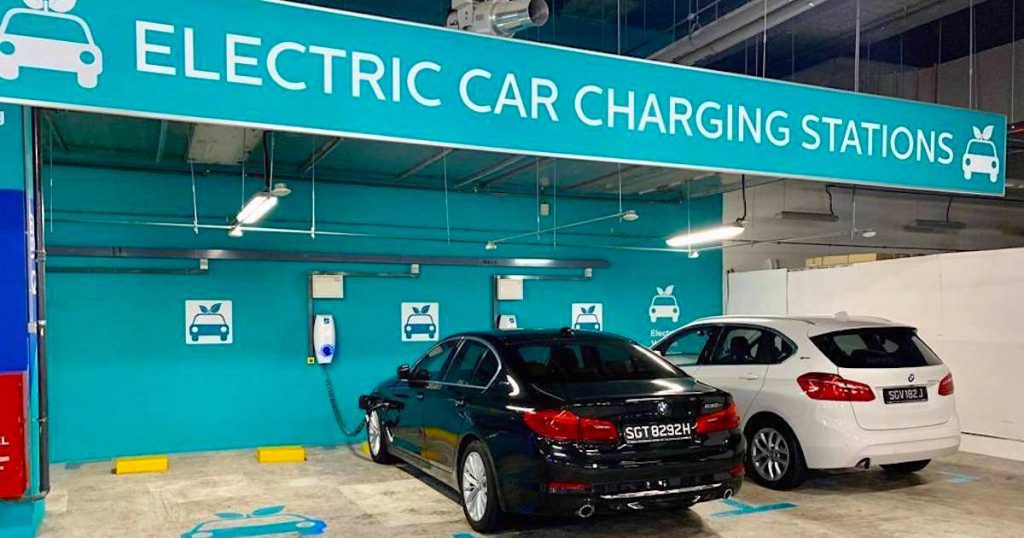Singapore is on track to dominate Southeast Asia’s electric vehicle (EV) market by 2040, reported The Straits Times based on a recent report from BloombergNEF.
The report predicted that a whopping 80% of all passenger vehicles in Singapore will be electric by that year. In contrast, the regional average is forecast at just 24%.
The EV scene in Singapore is already heating up. In 2023 alone, EVs made up 19% of all new car sales in Singapore, and in the first seven months of 2024, that number surged to over 32%.
What’s pushing Singapore ahead? A combination of supportive government policies, infrastructure, and market dynamics.

Unlike other Southeast Asian countries where car owners tend to hold on to their vehicles for more than a decade, Singapore’s Certificate of Entitlement (COE) system encourages owners to trade in their cars every 10 years. This system is a driving force behind the nation’s faster adoption of EVs.
This puts the city-state miles ahead of its regional peers, with the Southeast Asian average projected at just 24%.
Regional competition

Thailand, Southeast Asia’s biggest EV market currently, saw passenger EV sales rise more than fourfold in 2023 to 86,383 units, bolstered by subsidies and tax breaks. Major Chinese automakers like BYD and Great Wall Motor are establishing manufacturing bases there, further driving growth.
By 2040, Thailand is expected to be second only to Singapore in EV market share in the region, with 41% of passenger vehicles forecast to be electric.
Vietnam and Indonesia are also making headway, though they still trail Singapore by a wide margin. Vietnam is aiming for 31% of passenger vehicles to be electric by 2040, while Indonesia is targeting 25%.
Malaysia and the Philippines, however, will lag further behind with 15% and 10%, respectively.
The price factor
According to the news article, the BloombergNEF report highlighted one critical factor driving the adoption of EVs: falling battery prices.
Komal Kareer, the author of the BloombergNEF report, was quoted as reporting, “Falling battery prices will reduce the upfront cost of the vehicle … and make EVs competitive with gasoline(-fuelled) vehicles.”
In fact, between 2010 and 2023, battery pack prices fell by a whopping 90%, and BloombergNEF expects this downward trend to continue.
As battery technology improves and production scales up, the upfront cost of EVs will decrease, making them more attractive to consumers.
However, the challenge remains in producing electric models that deliver both affordability and performance, especially for markets outside Singapore.
Leading the charge
While Singapore is projected to lead in EV adoption soon, it’s already leading in charging infrastructure. In 2023, the country boasted the highest density of EV charging stations in the region, with one charging station for every three EVs.
Compare that to Thailand’s one charger per 16 EVs, Malaysia’s one per 38, and Indonesia’s one per 42.
As more EVs hit the road, Singapore is planning to expand its charging network, with 60,000 EV charging points set to be available by 2030.

However, as Associate Professor Walter Theseira from the Singapore University of Social Sciences pointed out, while range anxiety is virtually nonexistent in Singapore due to its compact size, the challenge lies in the availability of chargers.
Since most Singaporeans don’t have private garages, they rely on public chargers, which means the accessibility and location of charging stations are key factors in driving EV adoption in the nation.
The future is electric
The electrification of public transport is also a big part of Southeast Asia’s green future.
Thailand leads the region, with plans for thousands of electric buses in Bangkok alone. In Indonesia, the government aims to electrify half of Jakarta’s bus fleet by 2027.
Singapore, too, has ambitious goals, with plans for half of its 6,000 public buses to be electric by 2030 and a fully electric public bus fleet by 2040.
This shift is part of the broader Singapore Green Plan, which includes the goal of having all vehicles run on cleaner energy by 2040.
Singapore’s commitment to electrification puts it at the forefront of Southeast Asia’s EV revolution. With supportive policies, a rapidly growing charging infrastructure, and falling battery costs, the island is poised to lead the region in the transition to electric vehicles.
By 2040, it’s clear that Singapore will not only have the largest share of passenger EVs but will also set the standard for sustainable transportation in Southeast Asia.
Featured Image Credit: Our Tampines Hub via Twitter










